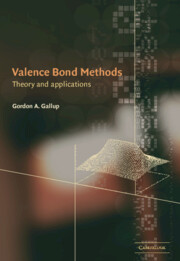Book contents
- Frontmatter
- Contents
- Preface
- List of abbreviations
- I Theory and two-electron systems
- II Examples and interpretations
- 9 Selection of structures and arrangement of bases
- 10 Four simple three-electron systems
- 11 Second row homonuclear diatomics
- 12 Second row heteronuclear diatomics
- 13 Methane, ethane and hybridization
- 14 Rings of hydrogen atoms
- 15 Aromatic compounds
- 16 Interaction of molecular fragments
- References
- Index
11 - Second row homonuclear diatomics
Published online by Cambridge University Press: 13 August 2009
- Frontmatter
- Contents
- Preface
- List of abbreviations
- I Theory and two-electron systems
- II Examples and interpretations
- 9 Selection of structures and arrangement of bases
- 10 Four simple three-electron systems
- 11 Second row homonuclear diatomics
- 12 Second row heteronuclear diatomics
- 13 Methane, ethane and hybridization
- 14 Rings of hydrogen atoms
- 15 Aromatic compounds
- 16 Interaction of molecular fragments
- References
- Index
Summary
For many years chemists have considered that an understanding of the theory of the bonding of the homonuclear diatomic molecules from the second row of the periodic table is central to understanding all of bonding, and we consider these stable molecules first from our VB point of view. The stable molecules with interesting multiple bonds are B2, C2, N2, O2, and F2. Of course, F2 has only a single bond by ordinary bonding rules, but we include it in our discussion. Li2 is stable, but, qualitatively, is similar to H2. The question of the existence of Be2 is also interesting, but is really a different sort of problem from that of the other molecules. Of the five molecules we do consider, B2 and C2 are known only spectroscopically, while the other three exist at room temperature all around us or in the laboratory.
Atomic properties
Before we launch into the discussion of the molecules, we examine the nature of the atoms we are dealing with. As we should expect, this has a profound effect on the structure of the molecules we obtain. We show in Fig. 11.1 the first few energy levels of B through F with the ground state taken at zero energy. The L-S term symbols are also shown. The ground configurations of B and F each support just one term, P, but the other three support three terms. All of these are at energies below ≈4.2 eV (relative to their ground state energies).
- Type
- Chapter
- Information
- Valence Bond MethodsTheory and Applications, pp. 145 - 161Publisher: Cambridge University PressPrint publication year: 2002

